TC Auto Show to feature Truck Summit
Filed under: Equinox, Weekly test drives, Features, Autos, Uncategorized
By John Gilbert
If you are able to attend any of the world’s major auto shows — such as Frankfurt, Geneva, Paris, Japan, or the Big Four in the U.S., Los Angeles, Chicago, New York and Detroit — the magnitude is amazing. But that doesn’t mean the smaller population centers are any less intense in their interest. And most of them aren’t that small.
That interest in Minnesota will ride a new idea, armed with an impressive economic impact study that shows the auto show may have a financial impact on the region of $19 million every year, with a nine-day run that makes its earnings greater than the Super Bowl or the Final Four.
If you don’t care about the huge congestion at the Big Four shows, you might be able to calm down and enjoy the Twin Cities show., which runs from March 7-15.
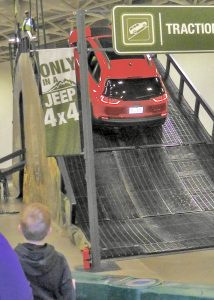
A young enthusiast was mesmerized watching drivers take on the Jeep off-road demonstration at the Twin Cities Show.
My fondest memory of the Twin Cities Auto Show came a few years ago, while taking a pre-opening run through the displays at the Minneapolis Convention Center. There was a Jeep display, where a huge hill had been formed and rides were given to show how steep an incline, and descent, the new Jeeps could handle, which was better than some state fair thrill rides. As I watched the demonstration, there in the foreground was a kid, exactly the kind of kid who might spend his spare time playing with a model truck in his backyard sandbox, and he stood there, transfixed as he gazed at the Jeep going up and over.
That was a couple years ago, and I should have realized then exactly why our country, and particularly our state, had started on a transition from cars to trucks.
It has happened, of course. And when the Twin Cities Auto Show opens March 7, 2020, the focus will be on its Truck Summit on March 6 to break down the reasons for the shift.
There are a lot of other significant vehicles that will fill the huge site, with particular emphasis on the emerging electric car phenomenon that could change the world’s auto industry. But there also will be dozens of trucks, from Ford, Ram, Chevrolet, Toyota, Nissan, Honda for pickups and all the newest SUVs and crossovers being shown by virtually all manufacturers.
We are fast closing in on the start of the U.S. major auto show season, which begins later with the Los Angeles show in late November, and continues with Chicago in February, New York in April, and Detroit in June. The Detroit date is the major departure, because it always has been in early January, but has shifted to summertime.
A lot of people in the auto industry are curious and anxious about that shift, moving the traditional mid-winter Detroit exposition to summer, and the anxiety is because a number of hard-core auto observers are concerned that the once-heralded major shows have faded in the intensity of interest by both auto makers and consumers. The question for us in Minnesota is, where does all that leave us, here in flyover land?
Golf SE Can Avoid All the Potholes — Almost
Filed under: Weekly test drives, Features, Autos
By John Gilbert
The annual complaints from Northern Tier U.S auto drivers drivers about the horrible condition of streets and highways has reached a pinnacle this year. We can blame Climate Change, or Global Warming, but a particularly long and tough winter of alternating freezing and mild temperatures has caused countless chunks of pavement to break, buckle and otherwise abandon their intended resting places, leaving nasty traps waiting to ambush unsuspecting tires, wheels and suspensiuon parts.
My city, Duluth, Minnesota, is, I submit, deserving of a nomination for the worst, and who can deny or judge it? I enjoy driving and reporting on an assortment of new vehicles every week to report on them, and I seek out varied real-world roadways to check on the steering and suspension of all these vehicles. But I certainly did not want a close-up and personal validation of my opinions of road conditions.
Out of familiarity with the roads that I travel most frequently, and so it was as I drove a 2019 Volkswagen Golf SE 1.4-turbo for a week recently. I had driven various VW Golf models, including the GTI, Golf R, and reported on a Golf SE with a stick shift during a minus-35-actual stretch of Minnesota winter. And while not trying to overdo it with repetitious reviews, this is supposedly the final year that we will get the tried-and-true Golf models in U.S. showrooms, which I have declared a sad thing; we’ll enjoy getting the GTI and Golf R, but the base car — the SE — is special on its own. It comes with VW’s newest engine, a 1.4-liter four-cylinder from a whole new engine family, bolstered by a turbocharger to extract surprising power from such a small engine.
The test car has a base price of $25,245, and a sticker of $27,435 as equipped. With only 147 horsepower, its 1.4 lacks the power of the corporate 1.8 or 2.0, but it has abundant torque, which peaks at 184 foot-pounds at a mere 1,400 RPMs — more than the bigger engines. This test car, in a medium Silk Blue Metallic paint job with alloy wheels, had an 8-speed automatic with almost-hidden paddle shifters on the steering wheel. So you get beyond the lack of horsepower by downshifting, then running the revs up to the pleasant feeling as the torque comes through.
Golfs always ride well, with supple but moderately firm suspension, which allows even the base car to take turns in a sporty manner. With all the contemporary safety elements built in — electronic stability control, anti-slip regulation, anti-lock brakes with electronic brake assist — the 4-door hatchback Golf is a safe, solid luxury compact that can get more than 38 miles per gallon.
I was able to attain 38.2 mpg in combined city-highway driving, while EPA estimates show 37 highway, and I was over 36 in all-city operation. That’s up there in TDI country, where only the previous turbo-diesel could go.
The 225-45 17-inch Pirelli P7 tires obviously contribute to the excellent handling and smooth ride. So there I was, negotiating the pits and pitfalls of Duluth’s nastiest streets and roads through five days of the week.
The rural highway we live on is a few miles out the North Shore, and as you drive south to join the freeway for the ride into Duluth, you leave the township, with its St. Louis County-maintenance, and enter Duluth’s city limits, where city crews take care of the surface. You don’t need the sign that says “Duluth,” because you can see the white surface, probably concrete, end where it meets the gray asphalt of the city segment.
Without question, the concrete stays amazingly smooth, and the asphalt chunks out in a harsh and irrgular manner. As I drive down on the 55-mph county segment, and slow for the 30 mph residential city rules, I have a practiced routine. The familiar start to the asphalt has re has a couple of modest potholes seem to join hands just to the right of the middle of the road. Being able to see a couple blocks ahead, I generally swing into the oncoming lane until I get past that stretch, then swing back into the right lane.
This time, with my wife, Joan, and older son, Jack, riding with me to meet up with our younger son, Jeff, at the Trampled By Turtles concert at Bayfront Festival Park, I saw a car or two coming toward us. I had to abandon my normal plan, so I chose to straddle the rough patch or go wide right. I chose to go wide right.
Ka-Chonk! My right front absorbed a rugged hit. Turns out, when I swung wide right to miss the moderate but annoying potholes I was aware of, my right front struck a fourth pothole 10 yards ahead that I was not aware of. It was a long and deep pit. As the blow reverberated, I continued driving, feeling nothing out of sorts, and it was with great relief that no serious damage could be detected.
I pulled onto the freeway and got up to the 65 mph speed limit without any hesitation or vibration, but after about a mile, a little warning sign came on the instrument panel: “Air loss detected in right front tire.” I slowed down immediately, cursing the bad luck, but I couldn’t pull off immediately because of a narrow shoulder. By the time I could, I felt the pull of the deflated tire. Sure enough, the impact of the tire striking what amounted to the far cliff of the Grand Canyon not only blasted a hole in the tire’s sidewall, it scratched up the flashy alloy wheel a bit, too,
It was impressive that the Pirelli P7 took the blow and held its integrity for a mile or so, and it was more impressive that the tire-sensor relayed such quick and accurate information.
With Jack as lead pit-crew guy, we changed it for the space-saver spare, and I drove gingerly the rest of the night and on to Sunday. The timing of my test-drive, though, was to end when the Chicago fleet delivery guys would pick up the Golf SE at 11 a.m. Monday and drive back to Chicago.
We didn’t want them driving that far on the space-saver, so I called Volkswagen of Duluth early Monday morning, explained what had happened, and inquired about their supply of P7s. They had four in stock, they said. When I got there, however, we realized that they were from a year-old supply and the new one was an inch larger, at 17. We talked it over, and I asked if they might have exactly the same SE model on their lot, and they did. Service manager Calvin Edel summoned the unsold car and his service crew did a quick remounting job.
Just to make sure there would be no imbalance, they put the new tire on the right rear and rotated the right rear to right front. Good move. I made it home about an hour before the drivers showed up, and they appreciated the quick and efficient work of Volkswagen of Duluth.
That VW dealership, by the way, is primarily responsible for recalibrating and legalizing almost all the many recalled Golf, Jetta and Passat TDI models to bring their turbo-diesel engines into full compliance, before being sent to dealers throughout the Upper Midwest, where they represented one of the great car values of our time. That’s impressive, especially if they do as thorough a job as they did changing and remounting that tire for the Golf SE.
The caution with which we take on the Pothole Obstacle Course driving through Duluth has been amplified. We’ve got some potholes this year that, to be fair, should register on the nav screen’s GPS.
Golf R Could Be Named ‘Golf RRRRRR’
Filed under: Weekly test drives, Features, Autos
By John Gilbert
Volkswagen is a difficult target to follow these days, coming out with new vehicles and new engines that give the German automaker a definite step up from most competitors. One seemingly dizzying move is the announcement that Volkswagen will keep selling the Jetta compact, and the Passat, its new Arteon luxury midsize sedan, as well as its wagons and SUVs, but it will stop sending its iconic Golf hatchback to the United States.
Well, almost. The spectacular Golf R that I recently tested for a week along the North Shore of Lake Superior is unquestionably based on the Golf, and thankfully, it will keep coming to U.S. showrooms, along with the GTI. But the base Golfs will be made for sale elsewhere only.
To Volkswagen, it’s not a puzzle. The Golf outsells the Jetta in every country of the world where both are sold, except the U.S. Our buyers became convinced they didn’t want small hatchbacks anymore, and we buy many more Jettas than Golfs, so the Golf is simply being eliminated from our future.
The asterisk is that Volkswagen has allowed it will bring in two specialty Golf models, the GTI and the Golf R. That, too, makes economic sense because the high-performance GTI and the even higher-performance Golf R account for something like 46 percent of all Golf sales in the U.S.
Despite the opportunity to be blown away by my week-long road test of a new 2019 Golf R in a new slate-grey color, I am disappointed to hear of the decision on the other Golfs. The GTI is, of course, the icon of all “hot hatches” and outruns the standard Golf with ease, but the basic Golf now comes with VW’s 1.4-liter turbo four-cylinder engine that is part of a new and different engine family than the 2.0 or 1.8 fours.
The 1.4 turbo powers the Jetta, and it only recently has migrated into the base Golf as well. I wrote about testing a base 1.4-turbo Golf in minus-30-degree January weather this past winter. It has plenty of power with the turbo and can push out amazing amounts of torque, and despite what the big-time magazines such as Motor Trend or Car & Driver say about needing more power and faster acceleration from everything they test, the 1.4 has at least adequate in performance, and is a fun way to achieve 40-plus miles per gallon.
But I digress.
The GTI set the standard for fun and high-performance handling and power and has maintained that stature since the 1970s. Volkswagen kept making subtle refinements without ever losing the flat handling and solid performance in the tweaked front-wheel-drive GTI hatchback. It was distinctive in autocross competition and road-racing for hoisting its inside rear wheel in a tight turn, evidence of how stiff the platform was.
Suggesting improvements for the GTI seemed like heresy, but VW has done it, with an under-publicized, under-rated and mostly under-appreciated Golf R. The 2019 Golf R shares the 2.0-liter dual-overhead cam four with the GTI, but it gets a power tweak in the R, up to 292 horsepower and 280 foot -pounds of torque.
That power is distributed to all four wheels in VW’s 4-Motion concept, and a 6-speed stick helps make the 4-door (only) hatchback stick. There will be no rear-wheel lifting in this one. It is too well-planted with the power going to all four wheels, and it is not likely you will ever screech the tires taking off, even if you try to. And why would you?
The test vehicle comes in at a bit over $43,000, and if that seems like a lot for a Golf, consider that it will go through anything, and handle with the same agile stability as the GTI, only better. And it should make the hillside-scaling in Duluth winters a joy rather than treacherous.
The 4-door form does nothing to lessen the sportiness of the R from the traditional 2-door coupe. and it adds convenience to rear occupants. First impression was stunning, because the color is a unique slate gray, which is flat compared to the various high-metallic shades of grey everybody seems to favor. Various other companies including Toyota and Honda also have recently tried a flat grey and it’s always eye-catching.
This one stands out because its distinctive color was set off by a set of black, 19-inch alloy wheels, making the high-performance Continental ContiSport Contact tires look like part of the wheels, and the all-black tire-wheel combination contrasts sharply and amplifies the car color. A tiny silver “R” adorns the grille, and any other special package indications are scarce, except for the four exhaust tailpipes that at least let you know that something special just blew by you.
I was able to get up and over 30-miles per gallon with the R when driving it conservatively, but it is a chore to resist running the revs up in second and third gears, which put you right up there in risk territory for any speed limit. Those revs rise steadily and smoothly, which also describes the way the Golf R handles the tightest turns, turning cloverleafs into highlights and making you wish for a chicane or two on your nearest interstate system.
The highlight of the auto industry ad business these days is the compelling new prime-time Volkswagen commercial, set to the “Sound of Silence” classic by Simon and Garfunkel. Great song, and a fantastic ad, because it shows an engineer getting up in the dark of night to walk through the darkened house to his design bench, where he’s drawing up a stunning new version of the Microbus — VW’s stodgy but lovable Woodstock-era van from the 1960s.
Only there’s nothing stodgy about the new van, with its dramatic snub-nosed styling, only hinted at in the commercial. Reviewers have claimed that the ad shows that Volkswagen is still trying to apologize for the diesel scandal of the past decade, whereby software in Volkswagen diesels ingeniously restricted emissions when being tested, but violated standards when running free.
We must always add the footnote that virtually every other company on the face of the earth that builds a diesel engine also has had similar problems, although they have been kept much quieter, suspiciously allowing General Motors, Ford, FCA, Mercedes and others to stay safely below the “scandal” threshold stamped on Volkswagen. Most of those are larger trucks, and the high-mileage Golf TDIs were so plentiful that the company has pretty much stopped building diesels — at least for the U.S.
There have been enough apologies, and hefty fines, and VW has proven capable of building a whole new fleet of exceptional cars with small, turbocharged gas engines. To criticize the critics, there are other reasons that ad is a clever look into the future. The opening line, “Hello darkness, my old friend,” fits the nighttime theme, and the closing line, which reiterates the phrase “…the sound, of silence,” as we are shown an outline of the new VW “bus” head-on. Hmmm…let’s see now. What is silent while running, but shines brightly in the night? How about an all-electric vehicle?
Car folks might know far better than ad critics that the new version of the Microbus shown at all the major car shows for two years now, and coming soon, will be all-electric. And thus it becomes an old friend reborning, and running silently.
Meantime, Volkswagen is putting the finishing touches on its all-electric Golf, called the e-Golf, which will definitely prove that VW is headed down the cleanest of clean-air paths. It will be silent, it won’t require any gasoline, and it may lead the way, along with the Microbus, for an entire new direction for VW.
But pardon me if I engage in a little pre-nostalgia: Give us your best electric-motor technology, give us that Microbus, but please, don’t take away our Golf R!
High-tech, Low Price Make Kona New Car Pick of the Year
Filed under: Features, Autos
By John Gilbert
The Hyundai Kona has earned the unprecedented honor of being named the 2019 “New Car Pick of the Year,” satisfying both the nation’s insatiable appetite for SUVs with restraint provided by the rational input from those of us at the website newcarpicks.com.
Among the numerous impressive and worthy vehicles filling every automotive segment these days, there are a number of worthy attractions for car buyers. But U.S. consumers have turned away from the lengthy list of outstanding new sedans and choosing to go with SUVs, the contemporary version of what we used to know as station wagons. Decades ago, we moved on to minivans, then to large SUVs, before falling back a bit to more reasonably sized sport-utility vehicles.
Hyundai, the South Korean conglomerate that has spent less than a decade vaulting from a mediocre bit player in the economy car business to a sensational company that learned the secrets of high technology, styling, and mechanical wizardry and has combined them all into attractive and appealing vehicles.
With the larger Santa Fe and Tucson SUVs finding success above a battery of fine cars from subcompact to luxury, the Kona is in a unique position to blend advanced styling and safe structure into a compact SUV — called CUV, for Compact Utility Vehicle. It is the perfect combination of all-weather all-wheel drive in a compact package large enough to carry some people, some luggage and equipment and yet small enough to be maneuverable — dare we say sporty? — in traffic congestion or twisty road regions. All of it comes in at a price that is remarkably reasonable, from $20,000-$30,000, which is just about half of what slightly larger SUVs try to command, even though they don’t have nearly the technical features that virtually fill the Kona.
This selection has no connection with the North American Car, Truck and Utility of the Year named this week at the Detroit International Auto Show. I was a member of that august jury for about a decade and a half, starting back when I spent 30 years writing about sports and cars at the Minneapolis Tribune. The North American Car of the Year jury decided to expand from a car of the year to add a companion truck of the year, and three years ago it added a separate SUV category, further diluting its choices.
For the record, that group also named the Kona its Utility of the Year, joining the Ram 1500 as Truck of the Year, and the Hyundai G70 sedan as Car of the Year. It is nice timing that Hyundai just recently decided to branch its largest sedans off under the name of its Genesis sedan, so those who might discriminate may not even realize that Hyundai, from South Korea, just claimed two of the three biggest prizes at Detroit.
Those three winners had been predicted in this column a couple of months ago, although we at newcarpicks.com remained undeterred about naming just one vehicle Car of the Year and taking it on as a project for the coming year to verify the choice. While test-driving every new vehicle that I can get my hands on, we will have our own Kona to run through long-term testing, with my wife, Joan, keeping track of every expense and describing little tidbits of pleasure or nitpicks we can find from driving and living with the vehicle. Occasionally our sons, Jack and Jeff, will provide further input.
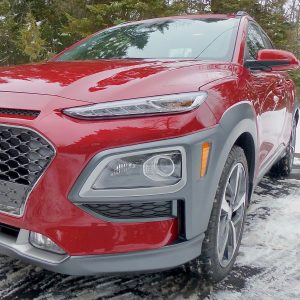
Array of lights include LED headlights, with foglights, driving lights and foglights separated stylishly on Kona’s front end.
The trend to go from cars to large SUVs never connected with us. My theory is “anything bigger than big enough is too big,” which was first aimed at gas-guzzling giant SUVs capable of hauling lots of large objects, even when you were commuting alone to work with no load.
Coming down to midsize SUVs made a lot more sense, and the recent surge of compact or crossover SUVs, built on efficient and economical car platforms, started proving to be viable alternatives to cars. The fact that the reduced price of regular gas reaching down to under $2.15 per gallon, was mere coincidence, although some companies were able to capitalize doubly because they were building much more efficient powertrains to take on the costlier fuel prices.
Now a fleet of compact SUVs or CUVs have captured the hearts of consumers, leading the way to the astounding fact that something like 72 percent of all the vehicles sold in 2018 were SUVs. No wonder Ford, General Motors and FCA are reducing the number of cars they build in favor of SUVs and pickups. When oil companies again find a way to raise prices, those who thought it was OK to buy larger and less efficient SUVs will unload them in a hurry for compact SUVs, which are almost as inexpensive to operate as compact cars. Of all of these, we think the Kona is the best new one, and a technological breakthrough besides.
The Kona comes in a variety of models, from the base SE, which starts with front-wheel drive, and a highly efficient 2.0-liter engine that delays valve opening by Atkinson cycle to give optimum economy with its 147 horsepower and 132 foot-pounds of torque. A 6-speed automatic and all-season tires on 16-inch alloy wheels make the SE look almost identical to the upscale models, and stability management and traction control, plus hill start assist and downhill braking control and all necessary connectivity makes it a bargain, bolstered by 33 mpg highway EPA estimates.
Moving up to the SEL, Kona adds 17-inch alloy wheels and a host of high-tech things, such as anti-theft immobilizer, blind-spot alert, lane-change assist, cross-traffic and side collision warning, push-button start, leather wrapped steering wheel and shift knob, heated front seats, HD and satellite radio and a hidden cargo area at the rear.
Move still higher and you get to the Limited, which accumulates all the SE and SEL features and adds the option of my favorite Hyundai engine — the 1.6-liter direct-injection 4-cylinder with a turbocharger, good for 175 horsepower and 195 foot-pounds of torque, operating through a 7-speed dual-clutch transmission.
The top-level Ultimate has all the attributes of the Limited, plus 18-inch alloy wheels, power tilt and slide sunroof, LED headlights and taillights, foglights, leather seats and automatic temperature control. Also standard on Ultim
All four models offer the option of all-wheel drive over the standard front-wheel drive. The small but potent turbo 1.6 has Hyundai’s own 7-speed dual-clutch transmission, in which two internal clutches alternate which one is engaged, with one handling first, third, fifth and seventh and the other shifting into second, fourth and sixth. You can do it manually, by moving the floor shift lever into the manual side, or you can let it shift for itself, precisely and swiftly.
We will devote our Car of the Year evaluations to the Ultimate model with AWD. We selected the Kona despite the obvious situation that the rear seat room is tight, compared to larger midsize SUVs. Son Jack climbed back there, and at 5-foot-10, he declared it to be a bit tight climbing in, but once inside, it was adequate for head and legroom and surprisingly comfortable. We could say the same, for certain, about the leather front bucket seats, very supportive and comfortable.
Within the overall length of 164 inches, the Kona has 39.6 inches of front headroom dropping to 38 inches with the power sunroof, with rear headroom of 37.8, and front legroom of 41.5 inches with 34.6 inches in the rear. Cargo capacity is a modest 19.2 cubic feet with all seats in place, expanding to 45.8 with the rear seats folded down.
Among the Star-Wars-y features is the Blue Link, which allows us to program the car’s connectivity with our iPhones. You of course can use the key fob to lock and unlock the doors or pop the rear hatch, but you’ll want to download the free Hyundai app. Summon it, and you can lock, unlock, open the hatch, and also activate the auto-start by clicking the proper icon and executing by Wi-Fi!
In Duluth, Minnesota, where the all-wheel drive works wondrously on all the hills, being able to fire up the car for a warm-up of up to 10 minutes is greatly appreciated when the temperature occasionally dips below zero. There are stories such as the woman leaving her key fob in the console and realizing it as she headed out into the cold. She called her husband, who was out of town on business and explained her predicament. No worries. He used his iPhone to lock the doors and remotely start the car, a couple hundred miles away, and set the interior temperature to 71 degrees. She walked to the car and called him again, and he unlocked the car from long-distance and she got in and drove away.
There are other manufacturers that build such features into their vehicles, but generally they cost at least twice as much as the Kona. Being a person who loves high-tech gadgetry but also is always looking for a bargain, finding the Kona with all those features for under $30,000 made it the overwhelming choice as our Newcarpick of the Year.
Holiday gifts range from cars to tires to starters
Filed under: Equinox, Features, Autos
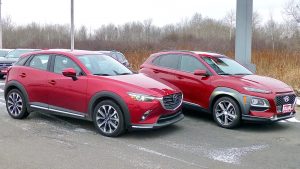
Two of the best inexpensive but high-tech compact SUVs are the Mazda CX-3, left, and the Hyundai Kona.
The model year changeover is extra intriguing this year because of the numerous and impressive bits of technology that have made their way into the automotive world. Here at Newcarpicks, we have whittled down the list of possible candidates for our Car of the Year down to the core, and the final decision will reflect the nation’s never-ending hunger for SUVs but will refuse to also recognize the seeming indifference to poor fuel economy that accompanies the quest for larer SUVs.
No, two of our finalists are more similar than different, and the second of those just arrived for a week-long examinaton in the Great White North. It is the Mazda CX-3 for 2019, which changes subtly from 2018 as a transitional vehicle in Mazda’s always-enticing lineup.
Gazing out at it in the early morning light at the Gilbert Compound on the North Shore of Lake Superior, I couldn’t take my eyes off it. It fairly glowed, like a large ruby, luring me to get out there and drive it. Somebody asked me what color it was, and I said I couldn’t remember the precise name, but it is a deep, lustrous red that goes right to your soul. Or at least my soul.
Then I examined the sticker to see if I could find the color.. There it was: “Soul Red Crystal” it said. Not bad. Maybe the fact I suggested the color went right through me to my soul was a tip. That color came out two years ago as a different and exclusive red on the CX-5, the midsize member of Mazda’s three SUVs. Last year it migrated to other models, where it will continue to be offered.
It turns out that Soul Red Crystal is a $595 option. I mentioned that to my inquisitive friend with the added note that it was a very expensive color, and probably worth it!
Swwms outrageous, perhaps, but I have never seen another color on any car, regardless of price, that affected me the same as Soul Red. So how much is it worth to have a distinctive color that lifted you up every time you approached the vehicle.
The CX-3 is a small SUV, too small by many contemporary standards, but the reason it is one of our finalists is that is loaded up with technology to match or surpass any other SUV, and it has some tricks that are beyond all the others.
As one of our two award leaders coming around the final turn and heading down the homestretch, the CX-3 is opposed by the Hyundai Kona, the smallest SUV offering from that South Korean company, and it, too, comes loaded with technology that other low-priced SUVs can’t hope to challenge.
That, too, looks good in its vast array of colors, but the red one stands out. Together, the two look like later Christmas tree ornaments.
Ah, Christmas is drawing close, and those of us who have family members or close-enough friends deserving of a holiday gift — which includes about all of us! — might leave us baffled about what we could get them that would be really different. Unique, even.
Buying a new vehicle for someone isn’t always possible, but if you need a new vehicle right about now, the CX-3 and the Kona are both available for right around $25,000, which is a modest price, especially when you examine the technology.
There are, of course, other wonderful Christmas gift ideas for a lot less than $25,000.
One is a set of winter or all-season tires, and the idea of the newest Nokian tires was appealing enough that I drove up to Ninth Street and Seventh Avenue East on the Duluth Hillside to talk to Jeff Hofstedt, propriator of “Foreign Affairs,” a cleverly named service outlet for all cars foreign or domestic, and also the nation’s leading seller of Nokian tires.
There are three or four different models of Nokians these days. I remain loyal to the all-season tires, stopping short of the all-out winter tire, the Hakkapeliitta. Without question, the Hakkapeliittas are the best winter tire on the market, matching the legendary Bridgestone Blizzak in glare-ice tracton, and outlasting even that stalwart for long wear in all conditions. I’ve found the WRG, and its newest derivative, the WRG-3, to be outstanding year-round, and still with exceptional snow and ice traction characteristics to get you through the harshest winter.
Both Car and Driver and Motor Trend finally got past the Tire Rack tradeout arrangement for using that company’s test track with the gentleman’s agreement deal that their annual winter tire test would only use winter tires sold at Tire Rack’s mail-order business. Nokian, a company in Finland which, Hoffstedt said, “invented the snow tire,” prefers to sell to smaller dealers and doesn’t go through Tire Rack, meaning Car and Driver and Motor Trend spent all those years comparing winter tires and declaring a winner while exclusing the best — the Nokian. The Hakkapeliitta won the top award by both magazines when they went to the company’s Finland home and tested above the Arctic Circle. I was hoping they’d include the WRG-3, because as an all-season tire, its unique tread compound sticks better than the snowtires of many competitors. Read more


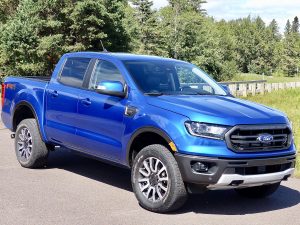
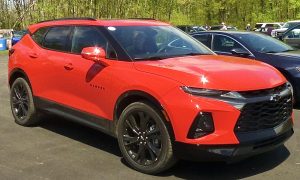
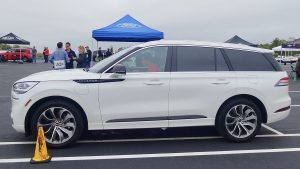
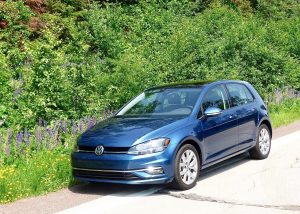
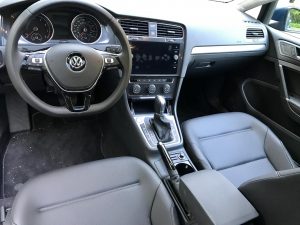
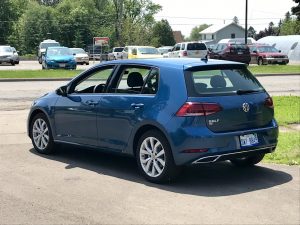



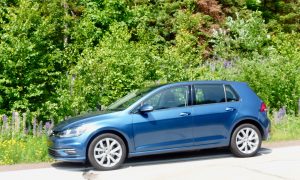
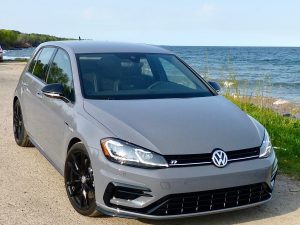
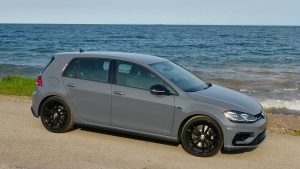
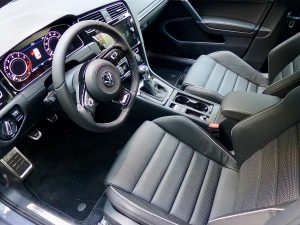
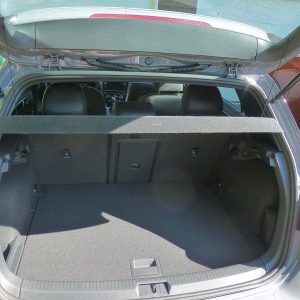
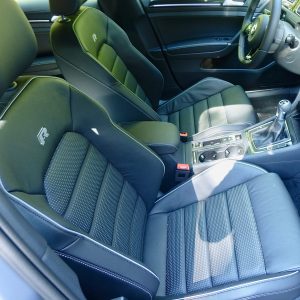

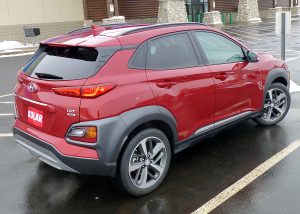
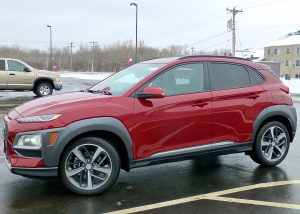

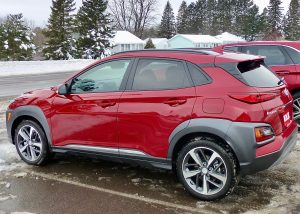
 John Gilbert is a lifetime Minnesotan and career journalist, specializing in cars and sports during and since spending 30 years at the Minneapolis Tribune, now the Star Tribune. More recently, he has continued translating the high-tech world of autos and sharing his passionate insights as a freelance writer/photographer/broadcaster. A member of the prestigious North American Car and Truck of the Year jury since 1993. John can be heard Monday-Friday from 9-11am on 610 KDAL(www.kdal610.com) on the "John Gilbert Show," and writes a column in the Duluth Reader.
John Gilbert is a lifetime Minnesotan and career journalist, specializing in cars and sports during and since spending 30 years at the Minneapolis Tribune, now the Star Tribune. More recently, he has continued translating the high-tech world of autos and sharing his passionate insights as a freelance writer/photographer/broadcaster. A member of the prestigious North American Car and Truck of the Year jury since 1993. John can be heard Monday-Friday from 9-11am on 610 KDAL(www.kdal610.com) on the "John Gilbert Show," and writes a column in the Duluth Reader.